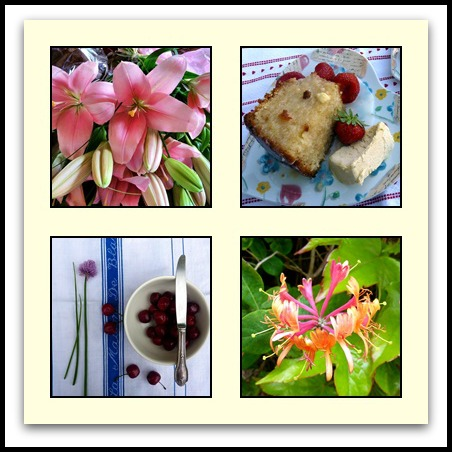The
pursuit of perfection has been a ‘hobby’ of mine for as long as I can remember.
Former work colleagues will acknowledge this
with a knowing smile; my work ethic and high standards were well-known. Family and friends will also recognize this
trait, as applied to topics as various as gardening, Halloween costumes, board
games, cross-stitch projects and cooking.
With
Number One Son (#1S), this characteristic evolved into a family joke that came
to be called “Letting Go of the Bay Leaf.”
During his high school years, I
was looking for a way to spend time with him, and we agreed that we would cook
one meal together each week. We used the
Web to choose a recipe, and then
engaged Spousal Unit to buy the necessary ingredients.
As
many of you know, bay leaves are a common ingredient in numerous dishes. Inevitably, the recipe will instruct you to
remove the bay leaves after the dish is cooked.*** This led to quite some
discussion – do the bay leaves really add that much flavor that it is worth the
aggravation of the ‘seek and remove’ routine? Why add them at all? I argued that anything listed in the recipe
should be included – the recipe was my definition of perfection, and anything
less than that would not do! Over time,
I learned that it WAS possible to exclude the bay leaves and still have a
perfectly delicious result. (It helped that Spousal Unit refused to buy bay
leaves.) From that point forward, #1S would encourage me to ‘let go of the bay
leaf’ in other situations when perhaps perfection was not required.
So,
when it came time to choose a name for my blog, #1S immediately suggested “Letting
Go of the Bay Leaf”. I did consider
other options. Good friends proposed numerous ideas, all relating to Jack
Daniel’s Tennessee Honey (Honey Jack) – inspiration might have come from a
bottle! At a family breakfast, Spousal
Unit offered “Wandering Aimlessly” and “Skidding in Broadside”, both of which
have strong family meaning. On
vacations, I usually had the map and ensured that we covered an area
completely, whether it was Walt Disney World or a cute village. No wandering aimlessly for us! Skidding in Broadside is derived from a
Hunter Thompson quote, which has been our family motto for almost 10
years. My test blog was called Toes in
the Water, partly a metaphor for dipping my toes in the waters of retirement,
and partly a reference to the Zac Brown song.
Ultimately, I felt Letting Go of the Bay Leaf was the most apt
description of how I want to approach my retirement years, so here we are!
So,
how is it going, this pursuit of a more relaxed state of being? For the most part, it has been a seamless
transition and every day is a new adventure.
At the same time, there have been adjustments. In running a household, there is ‘work’ to be
done, and we are figuring out the proper balance of ‘fun’ and ‘work’. There has been some re-negotiating of who does
which tasks and when. Spousal Unit had managed the family as a stay-at-home Dad
for 15 years, and now I was ‘intruding’ on his schedule and way of doing things. We’ve had to consider how to decide when
something is a priority – when you have a lot of time on your hands, it can
seem like nothing is a high priority. For
many years, we have had limited time together, and now we are together almost 24
hours of every day. Is it OK if we want
to have time to ourselves to go fishing (Spousal Unit) or to blog (me)? As in
most situations, the key has been communication; I am grateful that we came
into retirement with a firm foundation of trust and open communication. And above all, I just ask myself – should I
be letting go of this ‘bay leaf’?
***
Some members of the laurel family, as well as the
unrelated but visually similar mountain laurel and cherry laurel, have leaves
that are poisonous to humans and livestock.
While these plants are not sold anywhere for culinary use, their visual
similarity to bay leaves has led to the oft-repeated belief that bay leaves
should be removed from food after cooking because they are poisonous. This is
not true — bay leaves may be eaten without toxic effect. However, they remain
unpleasantly stiff even after thorough cooking, and if swallowed whole or in
large pieces, they may pose a risk of harming the digestive tract or causing
choking. There have been cases of intestinal perforations caused by swallowing
bay leaves, so unless the leaves in the recipe have been ground they should be
removed from the food before serving; otherwise the risk of a surgical
emergency remain. Thus, most recipes
that use bay leaves will recommend their removal after the cooking process has
finished.
Linking to Mosaic Monday










































